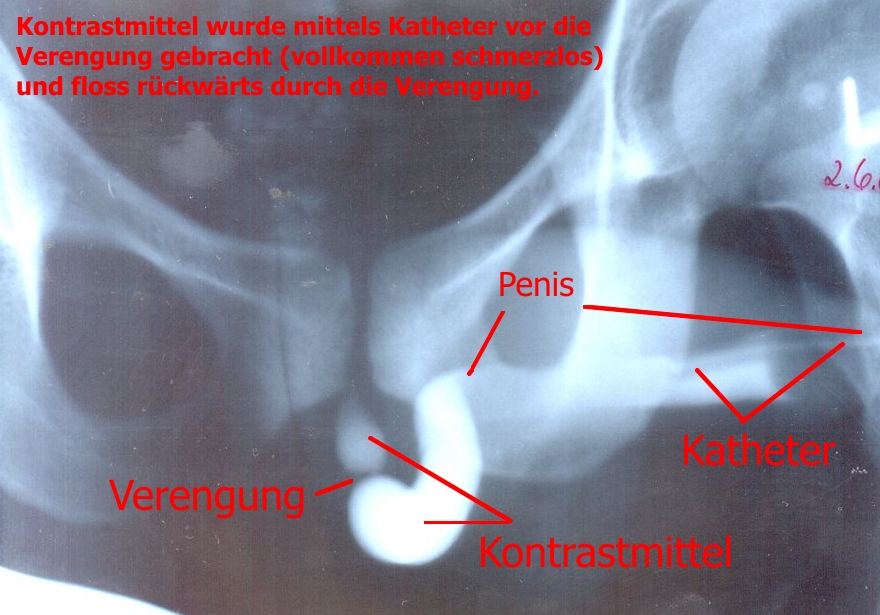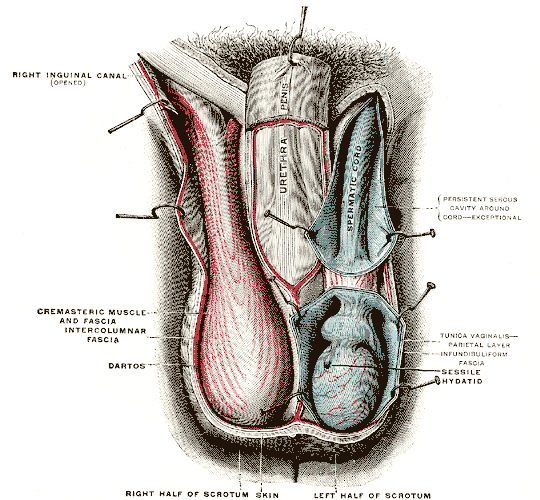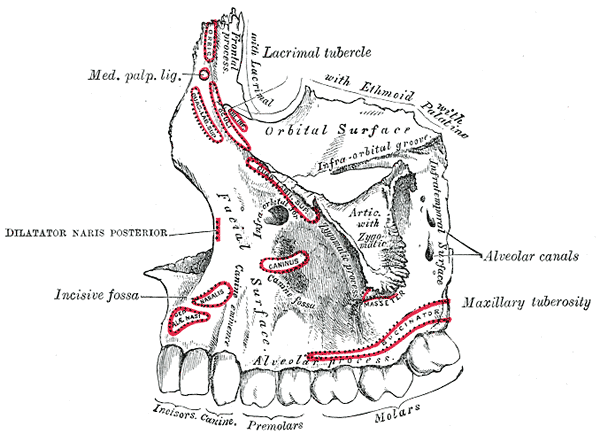|
Urethroplasty
Urethroplasty is the surgical repair of an injury or defect within the walls of the urethra. Trauma, iatrogenic injury and infections are the most common causes of urethral injury/defect requiring repair. Urethroplasty is regarded as the gold standard treatment for urethral strictures and offers better outcomes in terms of recurrence rates than dilatations and urethrotomies. It is probably the only useful modality of treatment for long and complex strictures though recurrence rates are higher for this difficult treatment group. There are four commonly used types of urethroplasty performed; anastomotic, buccal mucosal onlay graft, scrotal or penile island flap, and Johansen's urethroplasty. With an average operating room time of between three and eight hours, urethroplasty is not considered a minor operation. Patients who undergo a shorter duration procedure may have the convenience of returning home that same day (between 20% and 30% in total of urethroplasty patients). Ho ... [...More Info...] [...Related Items...] OR: [Wikipedia] [Google] [Baidu] |
Urethral Stricture
A urethral stricture is a narrowing of the urethra, the tube connected to the Urinary bladder, bladder that allows urination. The narrowing reduces the flow of urine and makes it more difficult or even painful to empty the bladder. Urethral stricture is caused by injury, instrumentation, infection, and certain non-infectious forms of urethritis. The condition is more common in men due to their longer urethra. Signs and symptoms The hallmark sign of urethral stricture is a weak urinary stream. Other symptoms include: * Splaying of the urinary stream * Urinary frequency * Urinary urgency * Straining to urinate * Dysuria, Pain during urination * Urinary tract infection * Prostatitis * Inability to completely empty the bladder. Some people with severe urethral strictures are completely unable to urinate. This is referred to as acute urinary retention, and is a medical emergency. Hydronephrosis and kidney failure may also occur. Complications * Urinary retention * Prostatitis * ... [...More Info...] [...Related Items...] OR: [Wikipedia] [Google] [Baidu] |
Urethrotomy
A urethrotomy is an operation which involves incision of the urethra, especially for relief of a stricture. It is most often performed in the outpatient setting, with the patient (usually) being discharged from the hospital or surgery center within six hours from the procedure's inception. Urethrotomy (also referred to as DVIU, or Direct Visual Internal Urethrotomy) is a popular treatment for male urethral strictures. However, the performance characteristics are poor. Success is less than 9% for the first or subsequent urethrotomies. Most patients will be expected to experience failure with longer followup and the expected long-term success rate from any urethrotomy approach is 0%. Beginning in 2003, several urology residency programs in the northeastern section of the United States began advocating the use of urethrotomy as initial treatment in the young stricture patient, versus urethral dilatation. It is theorized that the one-to-two years of relief from stricture disease will ... [...More Info...] [...Related Items...] OR: [Wikipedia] [Google] [Baidu] |
Urethra
The urethra (: urethras or urethrae) is the tube that connects the urinary bladder to the urinary meatus, through which Placentalia, placental mammals Urination, urinate and Ejaculation, ejaculate. The external urethral sphincter is a striated muscle that allows voluntary control over urination. The Internal urethral sphincter, internal sphincter, formed by the involuntary smooth muscles lining the bladder neck and urethra, receives its nerve supply by the Sympathetic nervous system, sympathetic division of the autonomic nervous system. The internal sphincter is present both in males and females. Structure The urethra is a fibrous and muscular tube which connects the urinary bladder to the external urethral meatus. Its length differs between the sexes, because it passes through the penis in males. Male In the human male, the urethra is on average long and opens at the end of the external urethral meatus. The urethra is divided into four parts in men, named after the lo ... [...More Info...] [...Related Items...] OR: [Wikipedia] [Google] [Baidu] |
Chlorhexidine Gluconate
Chlorhexidine is a disinfectant and antiseptic which is used for skin disinfection before surgery and to disinfect surgical instruments. It is also used for cleaning wounds, preventing dental plaque, treating yeast infections of the mouth, and to keep urinary catheters from blocking. It is used as a liquid or a powder. It is commonly used in salt form, either the gluconate or the acetate. Side effects may include skin irritation, tooth discoloration, and allergic reactions, although, apart from discoloration, the risk appears to be the same as that for povidone-iodine. Chlorhexidine rinse is also known to have a bitter metallic aftertaste. Rinsing with water is not recommended as it is known to increase the bitterness. It may cause eye problems if direct contact occurs. Use in pregnancy appears to be safe. Chlorhexidine may come mixed in alcohol, water, or surfactant solution. It is effective against a range of microorganisms, but does not inactivate spores. Chlorhe ... [...More Info...] [...Related Items...] OR: [Wikipedia] [Google] [Baidu] |
Bovie Knife
Electrosurgery is the application of a high-frequency (radio frequency) alternating polarity, electrical current to biological tissue as a means to cut, coagulate, desiccate, or fulgurate tissue.Hainer BL, "Fundamentals of electrosurgery", ''Journal of the American Board of Family Practice'', 4(6):419–26, 1991 Nov.–Dec. 400 V peak-to-peak) the vapor sheath is ionized, forming conductive plasma. Electric current continues to flow from the metal electrode through the ionized gas into the tissue. Rapid overheating of tissue results in its vaporization, fragmentation and ejection of fragments, allowing for tissue cutting. In applications of a continuous wave the heat diffusion typically leads to formation of a significant thermal damage zone at the edges of the lesion. Open circuit voltage in electrosurgical waveforms is typically in the range of 300–10,000 V peak-to-peak. Higher precision can be achieved with pulsed waveforms. Using bursts of several tens of microseconds i ... [...More Info...] [...Related Items...] OR: [Wikipedia] [Google] [Baidu] |
Scrotum
In most terrestrial mammals, the scrotum (: scrotums or scrota; possibly from Latin ''scortum'', meaning "hide" or "skin") or scrotal sac is a part of the external male genitalia located at the base of the penis. It consists of a sac of skin containing the external spermatic fascia, testicles, epididymides, and vasa deferentia. The scrotum will usually tighten when exposed to cold temperatures. The scrotum is homologous to the labia majora in females. Structure In regards to humans, the scrotum is a suspended two-chambered sac of skin and muscular tissue containing the testicles and the lower part of the spermatic cords. It is located behind the penis and above the perineum. The perineal raphe is a small, vertical ridge of skin that expands from the anus and runs through the middle of the scrotum front to back. The scrotum is also a distention of the perineum and carries some abdominal tissues into its cavity including the testicular artery, testicular vein, and ... [...More Info...] [...Related Items...] OR: [Wikipedia] [Google] [Baidu] |
Penis
A penis (; : penises or penes) is a sex organ through which male and hermaphrodite animals expel semen during copulation (zoology), copulation, and through which male placental mammals and marsupials also Urination, urinate. The term ''penis'' applies to many intromittent organs of vertebrates and invertebrates, but not to all. As an example, the intromittent organ of most Cephalopoda is the hectocotylus, a specialized arm, and male spiders use their pedipalps. Even within the Vertebrata, there are morphological variants with specific terminology, such as Hemipenis, hemipenes. Etymology The word "penis" is taken from the Latin word for "Latin profanity#Synonyms and metaphors, tail". Some derive that from Proto-Indo-European language, Indo-European ''*pesnis'', and the Greek word πέος = "penis" from Indo-European ''*pesos''. Prior to the adoption of the Latin word in English, the penis was referred to as a "yard". The Oxford English Dictionary cites an example of the w ... [...More Info...] [...Related Items...] OR: [Wikipedia] [Google] [Baidu] |
Buccal Cavity
The buccal space (also termed the buccinator space) is a fascial space of the head and neck (sometimes also termed fascial tissue spaces or tissue spaces). It is a potential space in the cheek, and is paired on each side. The buccal space is superficial to the buccinator muscle and deep to the platysma muscle and the skin. The buccal space is part of the subcutaneous space, which is continuous from head to toe. Structure Boundaries The boundaries of each buccal space are: * the angle of the mouth anteriorly, * the masseter muscle posteriorly, * the zygomatic process of the maxilla and the zygomaticus muscles superiorly, * the depressor anguli oris muscle and the attachment of the deep fascia to the mandible inferiorly, * the buccinator muscle medially (the buccal space is superficial to the buccinator), * the platysma muscle, subcutaneous tissue and skin laterally (the space is deep to platysma). Communications * to the pterygomandibular space, infratemporal space, submasseter ... [...More Info...] [...Related Items...] OR: [Wikipedia] [Google] [Baidu] |
Autograft
Autotransplantation is the transplantation of organs, tissues, or even particular proteins from one part of the body to another in the same person ('' auto-'' meaning "self" in Greek). The autologous tissue (also called autogenous, autogeneic, or autogenic tissue) transplanted by such a procedure is called an autograft or autotransplant. It is contrasted with allotransplantation (from other individual of the same species), syngeneic transplantation (grafts transplanted between two genetically identical individuals of the same species) and xenotransplantation (from other species). A common example is the removal of a piece of bone (usually from the hip) and its being ground into a paste for the reconstruction of another portion of bone. Autotransplantation, although most common with blood, bone, hematopoietic stem cells, or skin, can be used for a wide variety of organs. One of the rare examples is autotransplantation of a kidney from one side of the body to the other ... [...More Info...] [...Related Items...] OR: [Wikipedia] [Google] [Baidu] |
Ejaculatory Duct
The ejaculatory ducts (''ductus ejaculatorii'') are paired structures in the male reproductive system. Each ejaculatory duct is formed by the union of the vas deferens with the Excretory duct of seminal gland, duct of the seminal vesicle. They pass through the prostate, and open into the urethra above the seminal colliculus. During ejaculation, semen passes through the prostate gland, enters the urethra and exits the body via the urinary meatus. Function Ejaculation Ejaculation occurs in two stages, the emission stage and the expulsion stage.Rathus, S. A., Nevid, J. S., Fichner-Rathus, L., Herold, E. S. (2010). ''Human Sexuality in a World of Diversity''. Pearsons Education Canada, Pearson Canada Inc. Toronto, ON. The emission stage involves the workings of several structures of the ejaculatory duct; contractions of the prostate gland, the seminal vesicles, the bulbourethral gland and the vas deferens push fluids into the prostatic urethra. The semen is stored here until ejacula ... [...More Info...] [...Related Items...] OR: [Wikipedia] [Google] [Baidu] |
Urinary Sphincter
The human urinary system, also known as the urinary tract or renal system, consists of the kidneys, ureters, bladder, and the urethra. The purpose of the urinary system is to eliminate waste from the body, regulate blood volume and blood pressure, control levels of electrolytes and metabolites, and regulate blood pH. The urinary tract is the body's drainage system for the eventual removal of urine. The kidneys have an extensive blood supply via the renal arteries which leave the kidneys via the renal vein. Each kidney consists of functional units called nephrons. Following filtration of blood and further processing, waste (in the form of urine) exits the kidney via the ureters, tubes made of smooth muscle fibres that propel urine towards the urinary bladder, where it is stored and subsequently expelled through the urethra during urination. The female and male urinary system are very similar, differing only in the length of the urethra. 8002,000 milliliters (mL) of urine are no ... [...More Info...] [...Related Items...] OR: [Wikipedia] [Google] [Baidu] |
Prostate Gland
The prostate is an male accessory gland, accessory gland of the male reproductive system and a muscle-driven mechanical switch between urination and ejaculation. It is found in all male mammals. It differs between species anatomically, chemically, and physiologically. Anatomically, the prostate is found below the bladder, with the urethra passing through it. It is described in gross anatomy as consisting of lobes and in microanatomy by zone. It is surrounded by an elastic, fibromuscular capsule and contains glandular tissue, as well as connective tissue. The prostate produces and contains fluid that forms part of semen, the substance emitted during ejaculation as part of the male human sexual response cycle, sexual response. This prostatic fluid is slightly Alkalinity, alkaline, milky or white in appearance. The alkalinity of semen helps neutralize the acidity of the vagina, vaginal tract, prolonging the lifespan of sperm. The prostatic fluid is expelled in the first part of ej ... [...More Info...] [...Related Items...] OR: [Wikipedia] [Google] [Baidu] |







